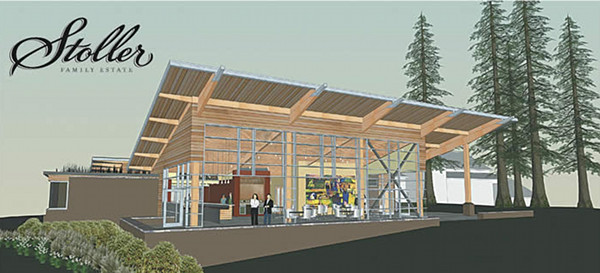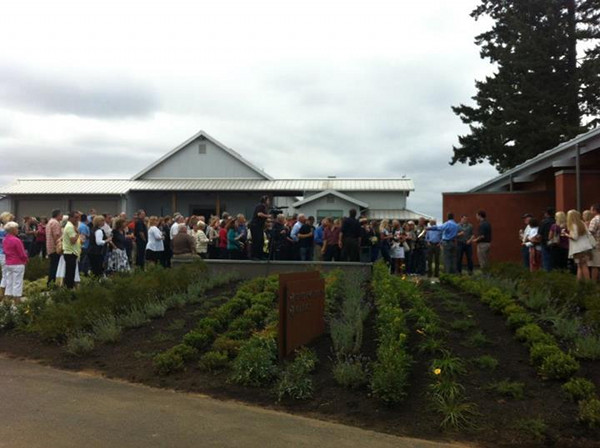In 2002, more than a dozen structures and countless trees were scorched in the course of the Biscuit Fire, which took down roughly 500,000 acres in southern Oregon. Now a Dayton-area winery with a history of green innovation — Stoller Family Estate — has put a number of those trees to use in its new tasting room, along with a whole lot of solar power.
This wood comes courtesy of the “standing dead,” i.e., trees that were killed by the fire but were left standing, often in excellent shape for those willing to make use of salvaged wood. Stoller put that wood to work in constructing its new tasting room, which features mostly reclaimed wood. Wood from the Biscuit fire was used in the building’s rolling ceiling, while the tasting room’s large support columns were upcycled from an old Portland warehouse.

Oregon’s KGW reports that the new Stoller tasting room’s 236 solar panels generate enough energy to power the entire building, and even send a little solar love next door to the Stoller winery. When the winery’s work slows down during the summer months, some of that energy will get routed back to the grid. That is, after the winery’s electric forklift has been charged, as well as the electric vehicles of any wine connoisseurs who happen to stop by for a sip of Stoller’s renowned pinot noir.
Other green features of the new tasting room — which was designed by the same firm that designed the winery itself, Ernest R. Munch of Portland — include natural daylighting, courtesy of a wall of windows, and soon, a green roof that will help to insulate the building while helping to manage storm runoff on site.

Stoller Family Estate is located in Oregon’s Dundee Hills area. It became the first Gold LEED-certified winery in the nation back in 2006, and has since carried on its commitment to environmental stewardship by becoming one of 14 wineries to take on the “Carbon Neutral Challenge,” a joint program of the Oregon Environmental Council and the Oregon Wine Board.
As part of the challenge, Stoller underwent a rigorous energy audit that revealed the most energy-intensive areas of its operations. It then joined other green-minded Oregon wineries in instituting a number of changes aimed at reducing greenhouse gas emissions, such as installing solar panels, retrofitting lighting, insulating tanks and even using goats, sheep and raptors instead of lawn mowers and pesticides. While 30 Oregon wineries originally signed on the line for the challenge, Stoller was one of only 14 that made it all the way to the end of the process. To complete the Carbon Neutral Challenge, all participating wineries purchased carbon offsets for their remaining emissions through the Bonneville Environmental Foundation’s methane digester projects.
The wineries that reached the finish line in this Oregon program also became members of The Climate Registry, a national system that sets standards for calculating, verifying and reporting greenhouse gas emissions.
Willamette Valley Vineyards of Turner and King Estate Winery of Eugene were the largest participating wineries in the Carbon Neutral Challenge. In addition to Stoller, the other wineries to complete the challenge include A to Z wineworks, Abaclea, Adelsheim, Chehalem, Cooper Mountain Vineyards, Left Coast Cellars, Lemelson Vineyards, Mahonia Vineyards and Nursery, Sokol Blosser Winery, Soter Vineyards, and Winderlea Wine Co.